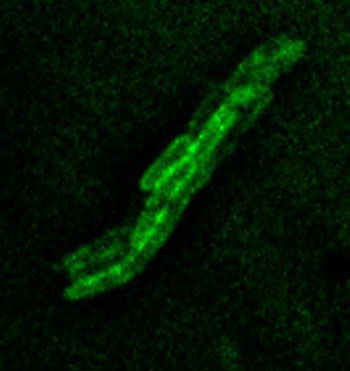Study Reveals Mechanism Protecting UTI Bacteria from Nitric Acid Damage
By LabMedica International staff writers
Posted on 08 Nov 2016
A team of molecular microbiologists has identified the enzyme cytochrome bd-I oxidase as promoting urinary tract infections by being of critical importance in protecting E. coli bacteria from the effects of nitric oxide generated by the host's immune response.Posted on 08 Nov 2016
Nitric oxide (NO) is a toxic free radical produced by neutrophils and macrophages in response to infection. Uropathogenic Escherichia coli (UPEC) generate a variety of defence mechanisms in response to NO, including direct NO detoxification, iron-sulphur cluster repair, and the expression of the NO-tolerant cytochrome bd-I respiratory oxidase.

Image: Cytochrome bd-I tagged with Green Fluorescent Protein can be visualized in the membrane of E. coli (Photo courtesy of Dr. Mark Shepherd, University of Kent).
Investigators at the University of Kent (United Kingdom) and colleagues at the University of Queensland (Brisbane, Australia) quantified the relative contribution of these systems to UPEC growth and survival during infection.
They reported in the October 21, 2016, online edition of the journal Scientific Reports that while UPEC have acquired a host of specialized mechanisms to evade NO-based stresses, the cytochrome bd-I respiratory oxidase was the main contributor to NO tolerance and host colonization under microaerobic conditions. Since cytochrome bd-I is absent in humans, drugs designed to target this enzyme would be less likely to be toxic to human cells.
Related Links:
University of Kent
University of Queensland










 (3) (1).png)


